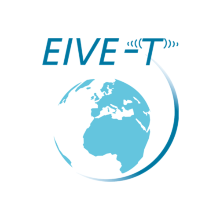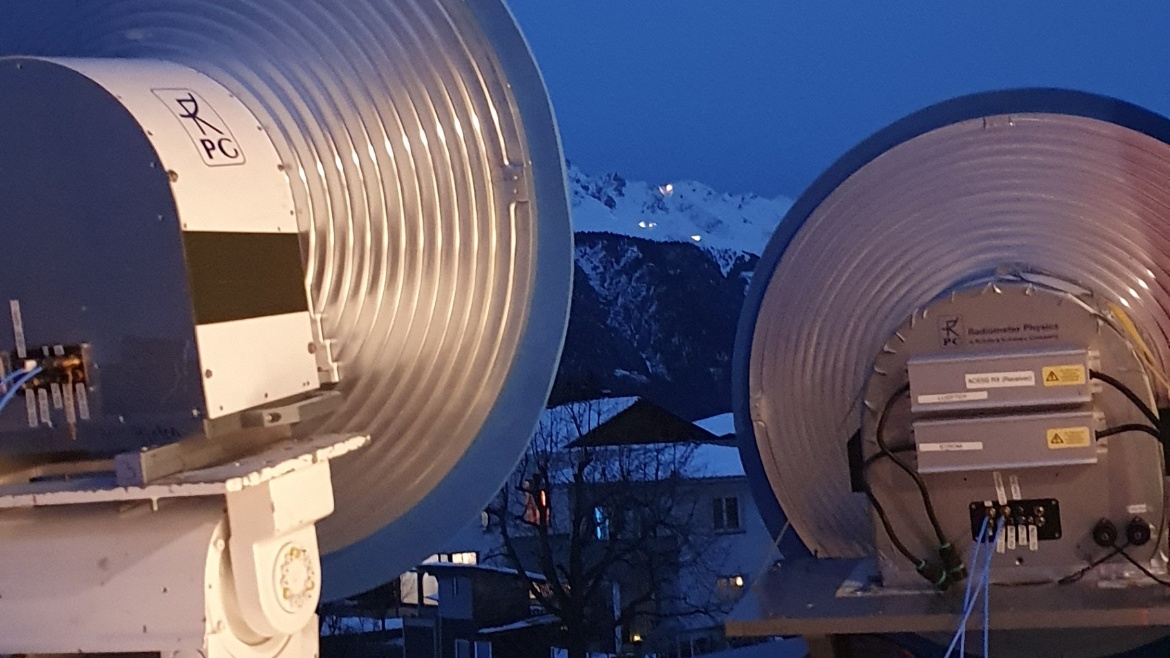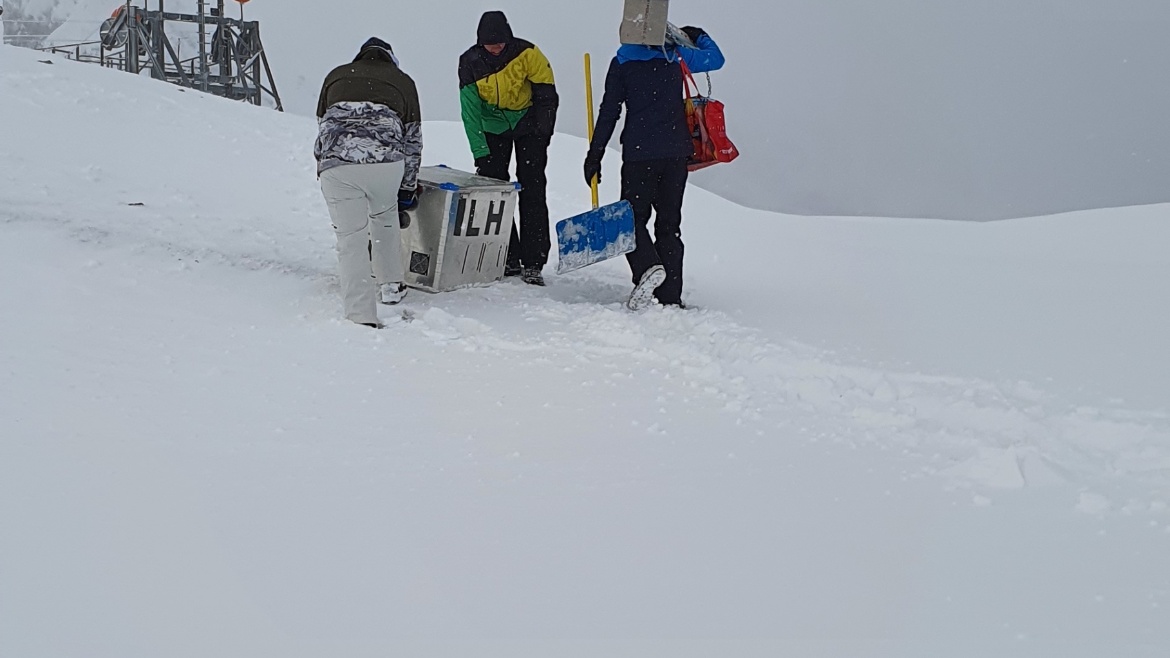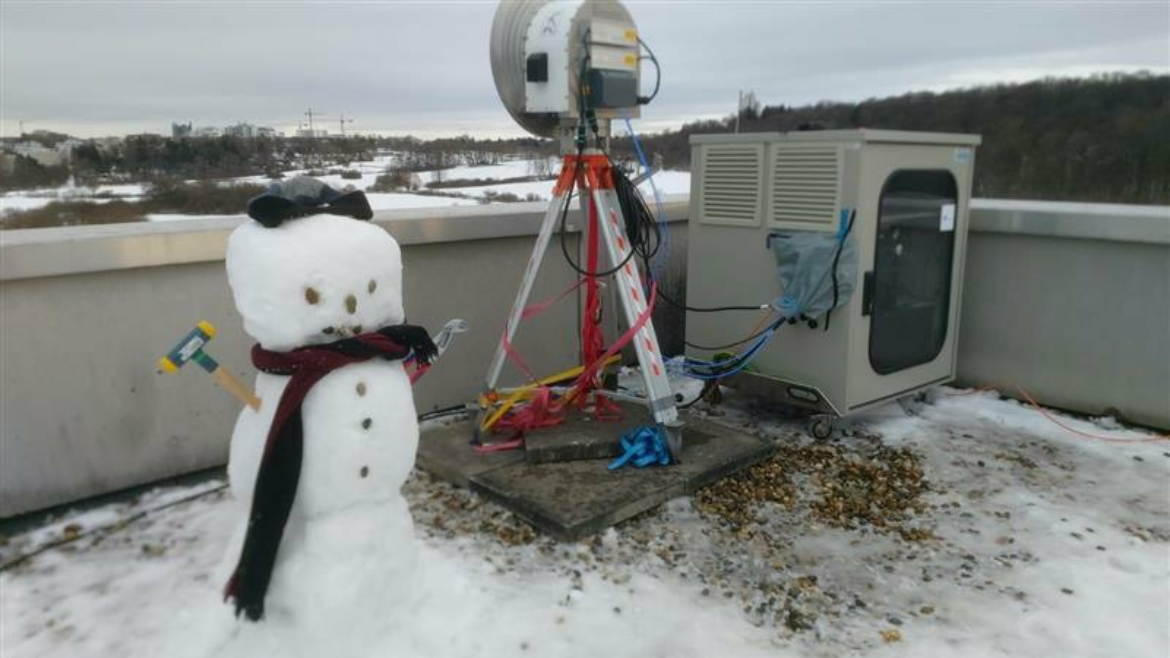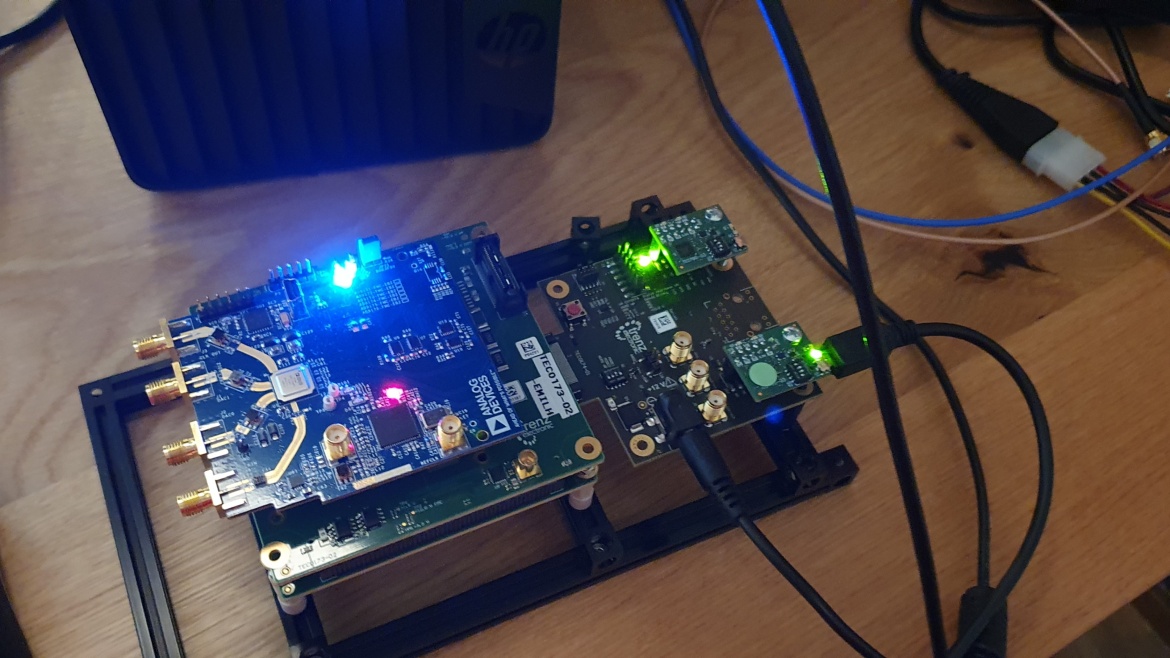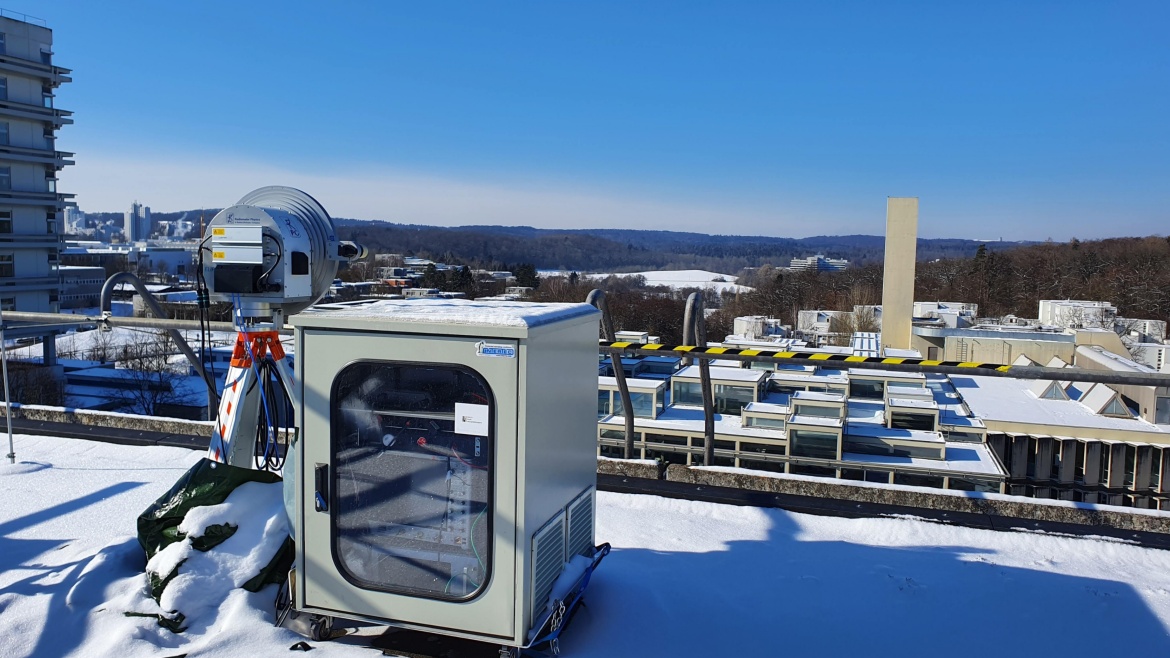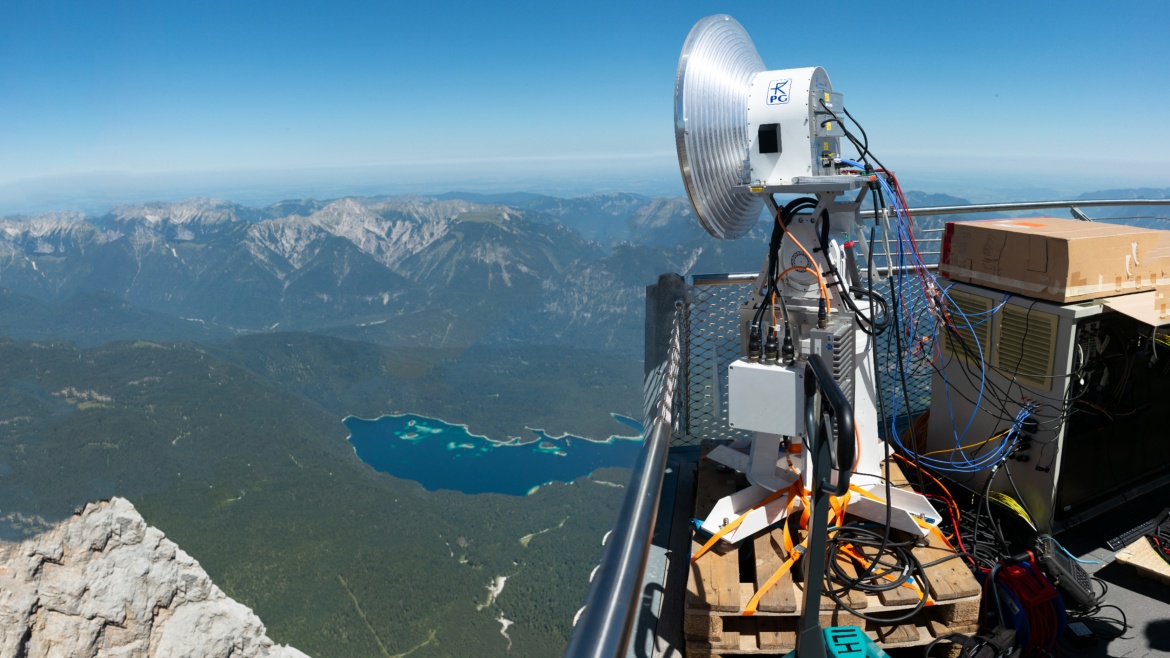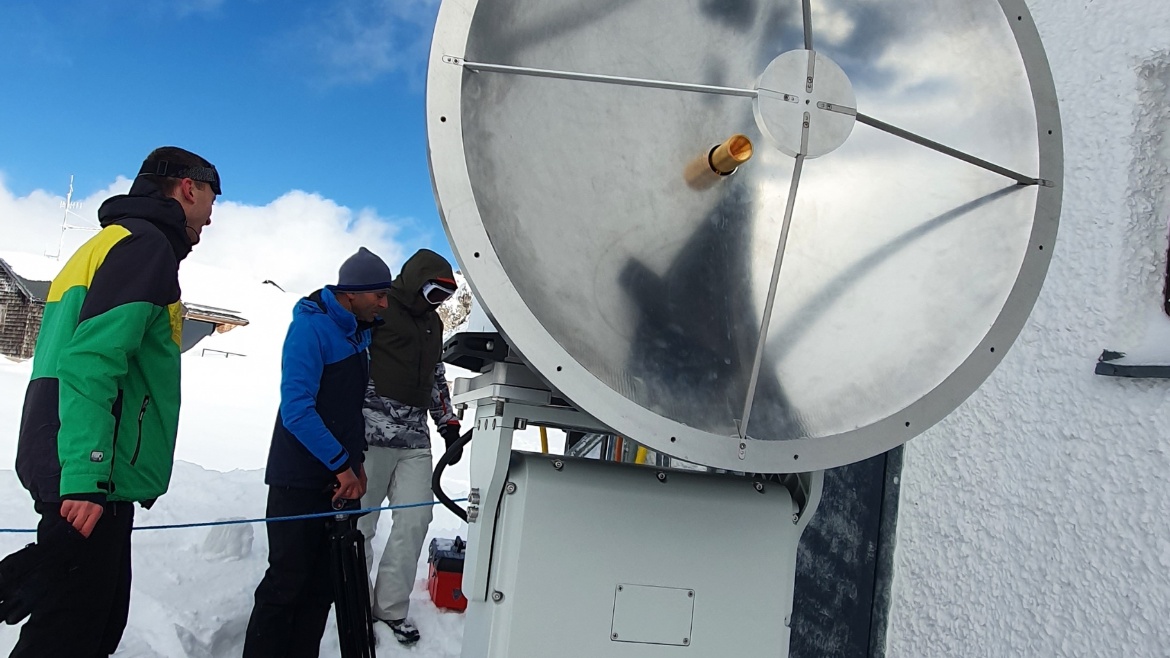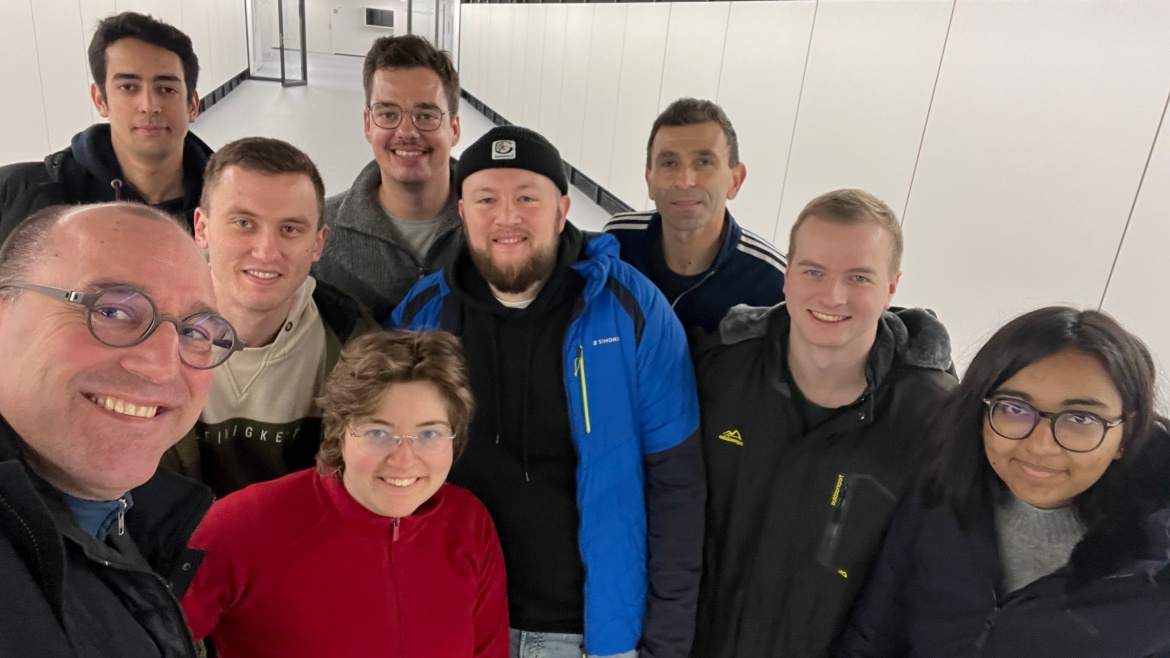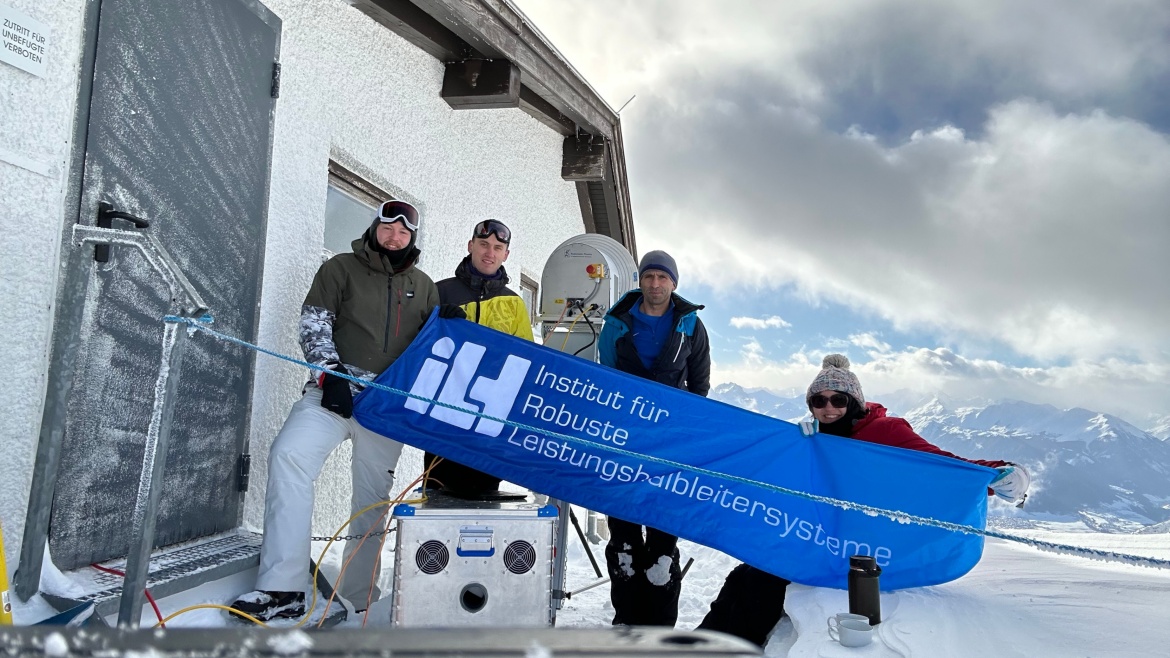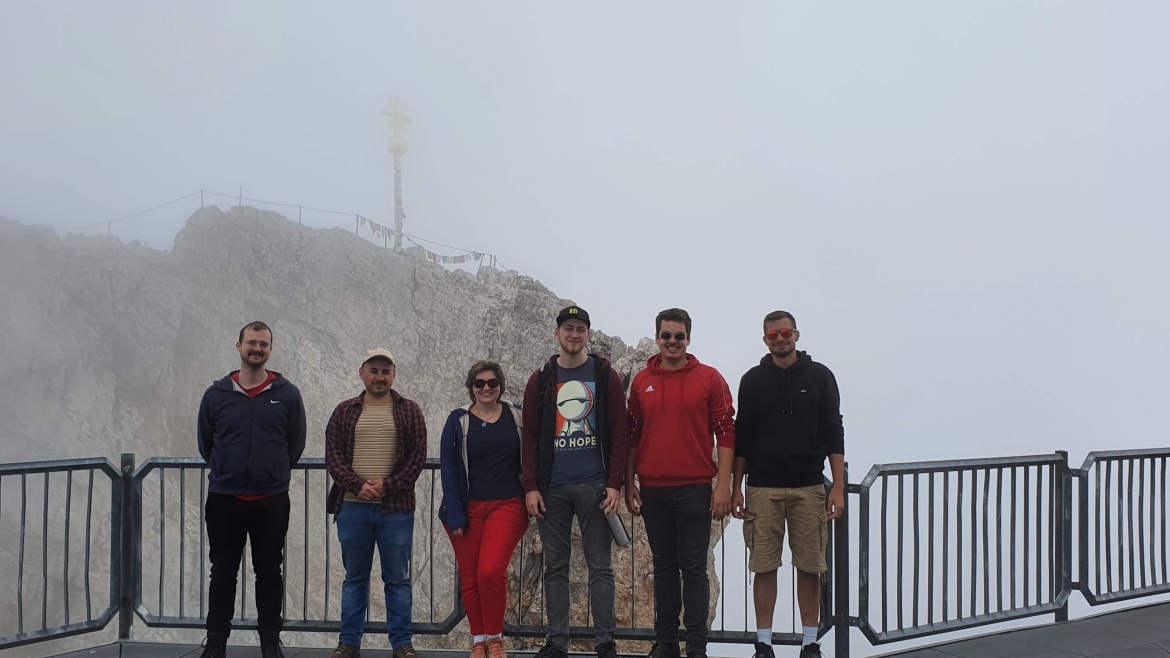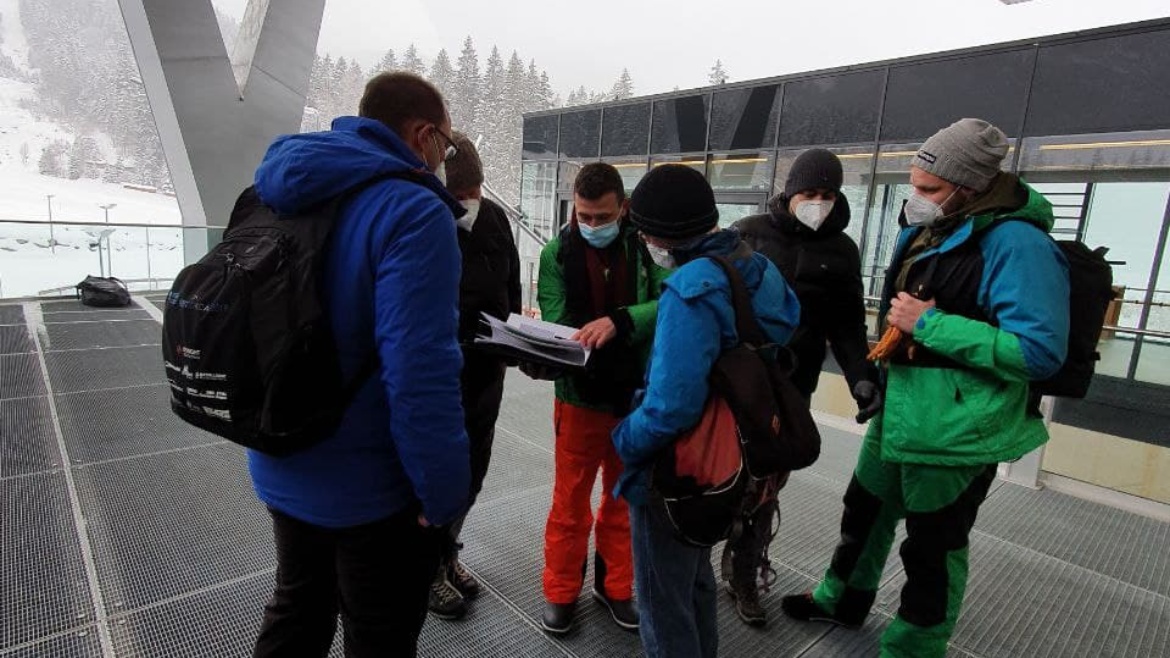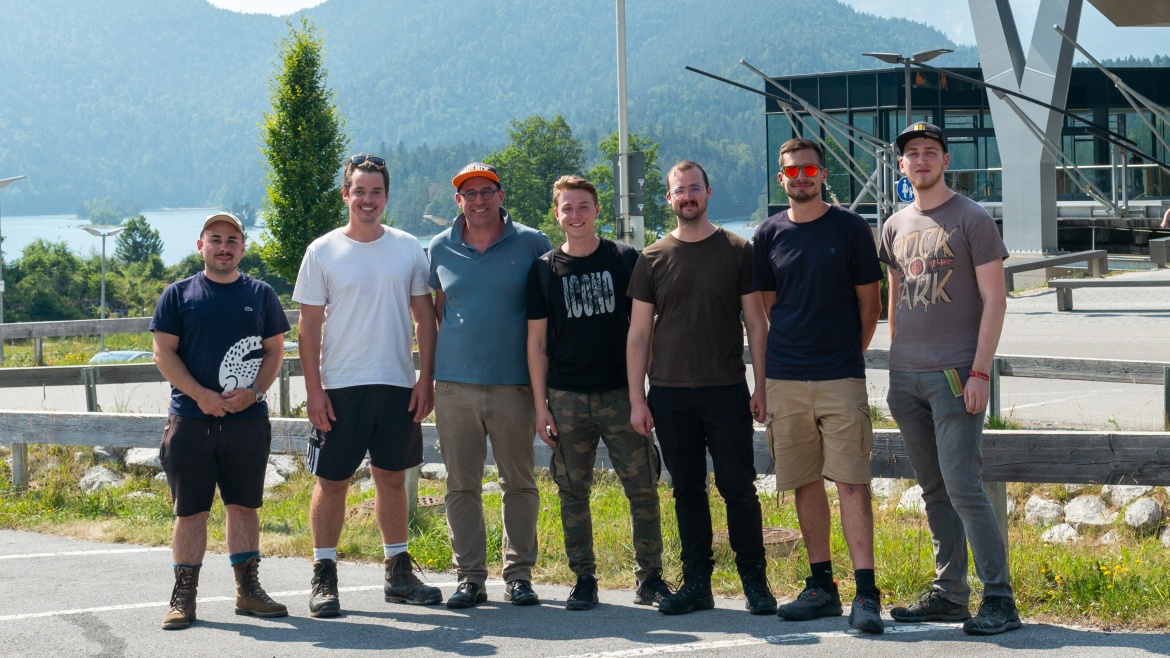EIVE-T is a DLR-funded research project. The goal is to characterize the atmospheric effects on the transmission quality of an E-Band link in multiple configurations.
A very short overview and project planing can be downloaded here. Detailed scientific explanations as well as students involvements in the project, are below.
With the EIVE-T project, we are following up on two predecessor projects of our group funded by DLR, building on the technology platform for high-performance E-band (71-76, 81-86 GHz) transceivers developed there, and planning several groundbreaking experiments for radio transmissions at the highest data rates and transmission distance.
The common goal of the proposed experiments is an in-depth study of atmospheric attenuation, rain patterns, and probability functions for the E-band frequency range to provide a clear roadmap for system developers.
With the EIVE-T project proposal, we propose several scientific experiments with data transmission to and from a high altitude mountain peak (Zugspitze) with the highest product of data rate and transmission distance, enabled by a technology platform for active satellite communication in the usable E-band frequency ranges 71-76 GHz and 81-86 GHz, developed within DLR predecessor projects. The experiments are designed to achieve the following scientific and technical objectives:
A statistically robust long-term study to measure the atmospheric effects on the quality of broadband modulated radio signals, performed for the first time at different elevation angles and penetrating the first cloud layers, as relevant in the case of satellite communications, and so far only described by interpolating models for ITU atmospheric attenuation.
With the project EIVE-T we follow up on two predecessor projects of our group funded by DLR, build on the technology platform for high performance E-band (71-76, 81-86 GHz) transceivers developed there, and plan several groundbreaking experiments for radio transmissions with highest data rates and highest transmission distance.
By using a duplex link in frequency division multiplexing (FDM) in conjunction with gigabit modems, the socially important use case of integrating a remote station in a remote area with Breibandinternet will be demonstrated.
By using the scientific payload developed in the ongoing EIVE project based on a modern Multi-System-on-Chip (MSoC) incl. the specially developed protocols and procedures for the transmission of high-resolution (4k) camera data, the EIVE payload will be tested in a real operational environment.
Finally, through the additional use of polarization multiplexing, we aim to achieve a record in terrestrial radio data transmission with the highest product of data rate (targeted up to 40 Gbit/s) and transmission distance (targeted 60 km) demonstrated so far.
The experiments are to be set up by scientific staff and students of the University of Stuttgart between ground stations in the foothills of the Alps, including those of the Kempten University of Applied Sciences, and a remote station on the Zugspitze and will be carried out.
A second set of experiments is planned from a valley site, Götzens, to the Hafelekar peak. A radio link of 2 x 10.15 km is planned. This would demonstrate a broadband radio link in the Austrian Alps from Götzens, a village in the valley near Innsbruck, to the Hafelekar peak at an altitude of 2334 metres.
The link between the terminals will demonstrate the robustness and reliability of the technology even in extreme alpine winter conditions and at an altitude of 7°.
The transmitter and receiver are located in the valley and incorporate state-of-the-art technology from project partners Fraunhofer Institute for Applied Solid State Physics (IAF) and Radiometer Physics GmbH. The summit terminal uses a reflector that is aligned by an automatic positioner. With this technology, the receiver does not have to be located close to the transmitter, but can be placed anywhere there is a line of sight to the summit.
In the experiment, the in-house developed payload computer for the EIVE mission (APU: Application Processing Unit) is tested to generate different modulation formats with different data rates and adapts the connection to the different weather conditions. The Figure shows the data flow diagram for the evaluation of atmospheric losses.
Student involvement
There are multiple thesis (and eventualy HiWi positions) available.
The options are very diverse, from circuit design (especially DC supply with voltage and current monitoring but also HF for adaptive analog signal filtering), system analysis (data processing to analyze the transmission quality, losses and impairment effects) to automation (control the transmission, adapt to the ambient effects, monitor sensors etc.) and even visualization (collect and visualize the data, quantify the transmission effects and results) and many other options. For details, questions and interests please send an "initiative application" email to the project responsible/ contact person, specifying your interests, experience and expectations.
We are looking forward to your application!
Cooperations and acknowledgments
The RF Frontend is developed by the Fraunhofer-Institute for Applied Solid State Physics in cooperation with the Radiometer Physics company.
The EIVE Payload computer, which will also be tested in the planed experiments, is developed by Thales Alenia Space Germany and programmed at ILH through different HiWis and research thesis.
Special thanks to Max Planck Institute for Solid State Research for alowing us to perform some "pre-measurements" and system calibration on a link of 1.6km.
We are extremely thankful for all the support, review and advices from employees of Tesat-Spacecom.
Cooperations with Umweltforschungsstation Schneefernerhaus, Zugspitzbahn and Hochschule Kempten are in discussion to allow us to succesfully conduct and perform the planned experiments.
The ILH would like to thank the municipality of Götzens, Alp Living Apartments Götzens and the Nordkettenbahn ski resort team for their crucial support in making this project possible.
We are extremely thankful to everybody involved in the project!
Project Grant
The EIVE project is financially supported by the Federal Ministry of Economy Affairs and Energy (BMWi) and the German Aerospace Center (DLR) under grant number 50YB2101.
Publications
- L. Manoliu, R. Henneberger, A. Tessmann, J. Seidel, M. Eppard and I. Kallfass, "Impairments of Atmospheric Attenuation on a Wideband E-Band Outdoor Communication Link," 2021 51st European Microwave Conference (EuMC), 2022, pp. 990-993, doi: 10.23919/EuMC50147.2022.9784215.
- L. Manoliu et al., "Measurements of Atmospheric Attenuation in an Outdoor Wireless E/W-Band Communication Link," 2022 14th German Microwave Conference (GeMiC), 2022, pp. 208-211.
- L.Manoliu, B.Schoch, D. Wrana, S. Haußmann, A. Tessmann, R. Henneberger, I. Kallfass, "Atmospheric Effects on Wideband-Modulated E-band Long-Range Communication Links", Kleinheubacher Tagung 2022
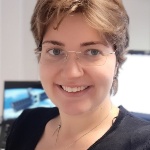
Laura Manoliu
M.Sc.Research Assistant


